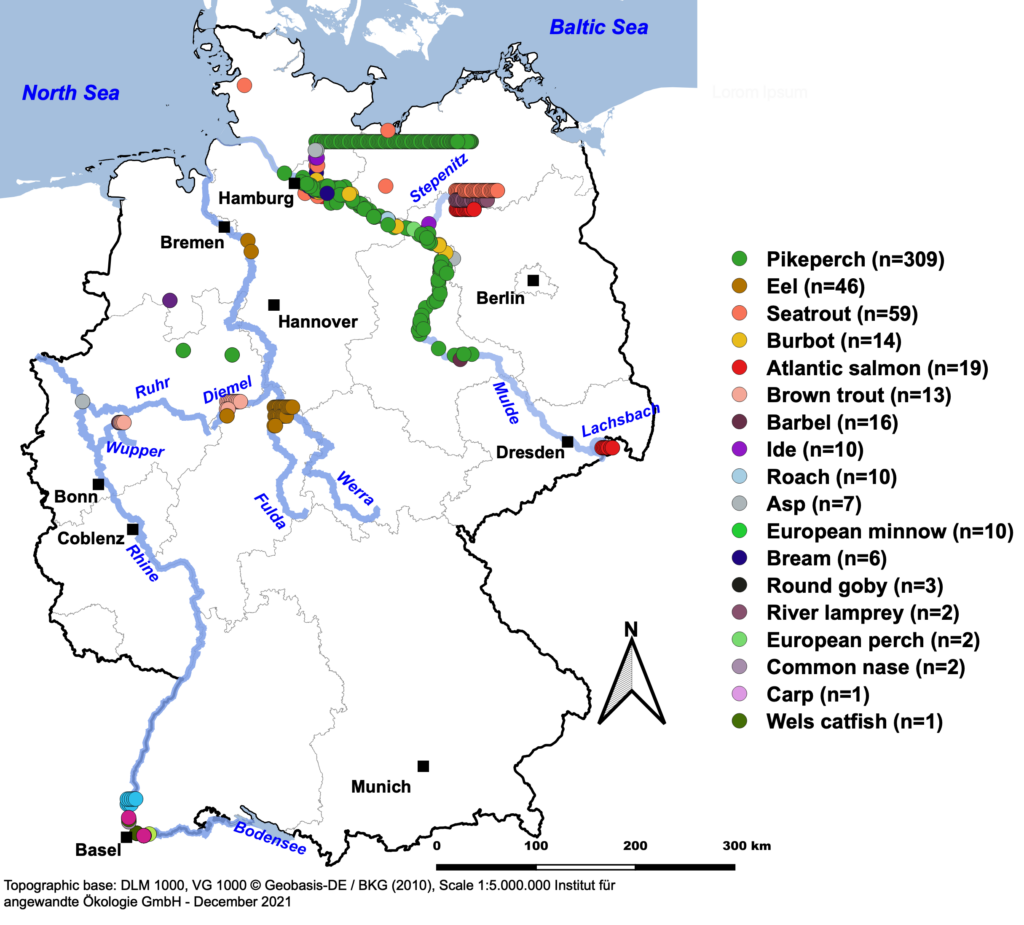Migration distances
Where have tagged fish been found and how far have they migrated.
The map below indicates the locations of release and recovery of individually tagged fish.

Unsurprisingly, anadromous species (those that migrate to the ocean from freshwater) such as salmon, river lamprey and sea trout migrate over great distances. However, recovery of tags from potamodromous species (those which do not migrate) indicate a range of activity up to several hundred kilometres. For example, it has been determined that barbel travelled distances of more than 300 kilometres in the river Elbe. The pikeperch, commonly described as a “resident” fish in many publications, has been found to cover distances of more than 500 kilometres.
| species | Migration distances upstream | Migration distances downstream |
|---|---|---|
| atlantic salmon / Salmo salar | 660 km | - |
| pikeperch / Sander lucioperca | 516 Km | 51 km |
| barbel / Barbus barbus | 334 km | - |
| river lamprey / Lampetra fluviatilis | 207 km | - |
| aspe / Aspius aspius | 188 km | 30 km |
| burbot / Lota lota | 159 km | 9 km |
| sea trout / Salmo trutta f. trutta | 155 km | 212 km |
| ide / Leuciscus idus | 135 km | 12 km |
| perch / Perca fluviatilis | 114 km | - |
| roach / Rutilus rutilus | 82 km | - |
| bream / Abramis brama | 4 km | 20 km |
| Black-mouthed goby / Neogobius melanostomus | 1,5 km | - |
| carp / Cyprinus carpio | - | 6 km |
| silver eel / Anguilla anguilla | - | 78 km |
| species | Migration distances upstream | Migration distances downstream |
The fact that fish also cover considerable distances in regulated rivers is made clear by two reported back barbels that were marked by “Saumon Rhin” in 2018 and stocked in the tailwater of the weir at Gambsheim in the river Rhine. These two fish had migrated 160 km upstream in one year, overcoming not less than 10 weirs.

